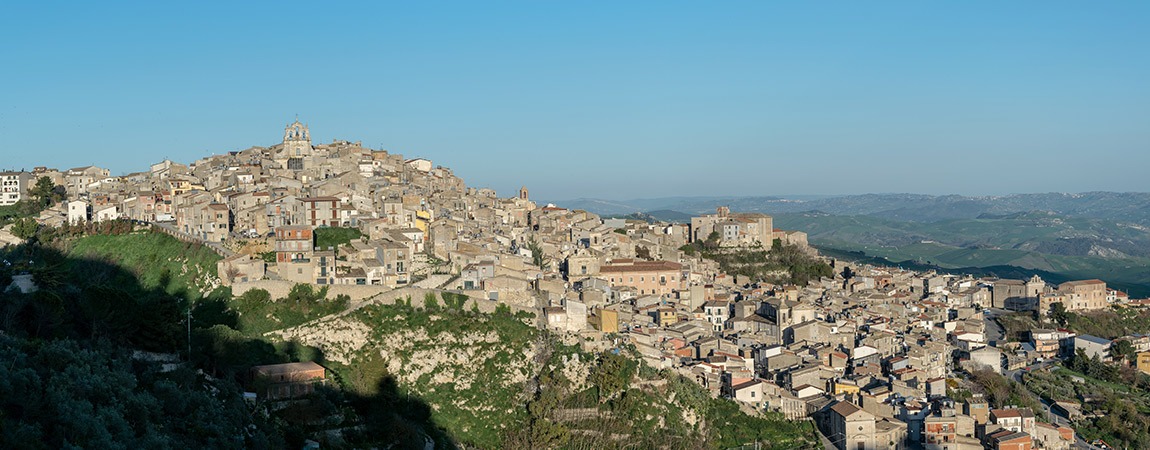
The history of the town of Mussomeli, in the province of Caltanissetta, dates back a long way. Even today, the heart of this extraordinary Sicilian village is a suggestive cave, the Chelli cave, evidence of an ancient past and its millenary origins.
In light of the many archaeological finds discovered, it has been hypothesized that the area around the current inhabited center was home to a Sicani settlement as early as 1500 BC
Subsequently the Greeks and Romans arrived who took advantage of the fertility of the hilly terrain. In 830 it was the turn of the Arabs, who for three centuries dominated not only Mussomeli, but also the entire island, forever influencing its culture and traditions.
However, there is little news from the news and sources on the matter history of Mussomeli during the Swabian and Angevin rule.
Manfredi di Chiaramonte, the master of the castle
Tommaso Fazello, the great Sicilian historian, in the 500th century, mentions in detail the transfer of Mussomeli, which occurred in the second half of the 1300s, from the Aragonese to Manfredi of Chiaramonte, Duke of Modica. It is the beginning of a grandiose epic which culminates in the construction of the majestic Castle which still today constitutes the main attraction of Mussomeli.
The construction of the imposing building took, according to the narratives of the time, only three years (1364-1367). On the hill on which the castle was built, a Swabian fortress previously stood and the Duke was fascinated by its inaccessibility which made it perfect from a strategic point of view to counteract possible enemy assaults.
The Hall of the Barons
The Castle was the seat of the "Hall of the Barons“, a very famous event in the history of the town of Mussomeli. The king of Trinacria, Frederick III of Aragon died in 1377 leaving the kingdom in the hands of his minor daughter Maria.
Her four guardians, among whom there was also Manfredi Chiaramonte, had conflicting ideas about the groom to choose for the queen. After the kidnapping of the young girl by Martino, prince of the house of Aragon, who married her, the Duke of Modica tried to demonstrate, without success, the illegitimacy of the union with the nobility of Trinacria, gathered in the hall of the castle of Mussomeli which, from then on, was called the "Barons' Hall".
The advent of the Aragonese
In 1392, with the advent of the Aragonese dynasty with the coronation of King Martin who had kidnapped and then married Maria, daughter of Frederick III, Manfredi di Chiaramonte was deprived of all his possessions, including the "castrum Musumelis", which were sold to the Moncadas, loyal to the Aragonese house.
For Mussomeli this latest sale marks the end of an era. Until the beginning of the 500th century, various baronies followed one another, from the Catalans Moncada and Castellar, to the Del Campo family who dominated Mussomeli for four generations.
The Del Campo family dominated the territory of Mussomeli until 1548 when the family sold the barony to Cesare Lanza, sadly known for being the patricide of the baroness of Carini, protagonist of the oral tradition of Sicilian storytellers.
The Lanza dynasty
In the mid-500th century, Mussomeli became the domain of the Lanza family who maintained control of it for three hundred years.
Il Baron Cesare Lanza he was very different from Manfredi di Chiaramonte. He was a lover of philosophy and was also passionate about occult sciences and the Kabbalah. In 1663, in Carini, he became the protagonist of the murder of his daughter Laura, guilty of having sullied the family's honor and caught in the act of adultery with her lover.
The episode is well known in Sicilian tradition and has given rise to songs that have spanned the centuries narrating the last minutes of the unfortunate baroness' life.
In Mussomeli, Cesare Lanza leaves the mark of his greatness with the construction, among other things, of the important one Benedictine monastery and a large aqueduct.
The end of the fiefdoms and the unification of Italy
The Lanza family held the county of Mussomeli until July 1812, when the island's parliament, meeting in Palace of the Normans in Palermo, abolished feudalism. At the time the town already had around 9500 inhabitants, almost as much as the current population. From that date, with the appropriation of the lands by the farmers, Mussomeli entered the modern age.
The most important stages of the nineteenth century in the history of the town of Mussomeli are: a first attempt at revolt against the Bourbons in 1820; ainvasion of locusts in 1832; acholera epidemic in 1837 and a new failed uprising in 1848 leading to the unification of Italy and from that moment on the history of Mussomeli merges with that of the rest of Sicily.
Mussomeli: the origins of the name
According to some, Mussomeli derives from the Arabic “Kalà Abet el Mumin”, or “Fortress of Abet el Mumin”. Another version derives the toponym from Menzil, in Italian hotel, and Malek, name of a sheikh.
Many scholars support the hypothesis of a Latin and not Arabic origin, tracing the term Mussomeli from Mons Mellis (honey mountain). Tradition has it, however, that the first inhabitant of Mussomeli, while building his house, came across a beehive, dirtying his mouth (mussu, in Sicilian dialect) with honey (meli, in dialect).
© Castiglione99, CC BY-SA 4.0, via Wikimedia Commons









